In machines and vehicles, engines use different types of belt drives, which are essentially endless loops placed over pulleys to transmit power. These belts serve specific functions and come in various types, not just different sizes. Whether it's a harvester, tractor, truck, or mower, each vehicle has its own unique engine setup. So, it's crucial to understand the types of belt, when to use them and where to find them on the Kramp web shop. , and where to find them on the Kramp web shop for efficient maintenance and performance.
One of the world’s leading suppliers of high-performance belt drives is Optibelt. With a history spanning 150 years, Optibelt initiated its production of V-Belts in 1948. Today, the company is renowned for crafting the most durable belts across various sectors. Its reach extends beyond agricultural technology, forest and grasscare, automotive, and construction industries, as its products find applications in manufacturing, the cement industry, logistics, packaging, and more. Operating under the guiding principle of 'Passion meets precision,' it was evident that Optibelt's wealth of expertise would be a valuable resource for this article, elucidating the different belt types and their suitable applications.
In this article, we discuss Classic V-Belts, Wedge Belts, and Raw Edged Cogged Belts. We also provide guidance on finding compatible belt drives on Kramp's web shop. It's important to note that the key difference between cheap and high-performance drive belts, like those from Optibelt, lies in their engineering, construction, and materials. Opting for quality belts is crucial to avoid frequent downtime and potential engine damage, as the adage "buy cheap, buy twice" suggests.
Read this article where we delve into various factors contributing to belt failures, methods to prevent them, and underscore the significance of proper belt inspection, adjustment, and regular maintenance checks.
VB – Classic V-Belts
V-Belts deliver excellent traction, speed, and durability while being simple to install and free from the need for any lubrication. Their distinctive trapezoidal cross-section, which gives them their "V" name, fits snugly into pulley grooves, providing slip resistance and efficient torque transfer.
These qualities make V-Belts the most prevalent type of drive belt. They're widely used in a variety of applications including agricultural machinery, mowers, industrial equipment, and especially in older machines.
You can identify the correct V-Belt by referring to the diagram and chart below. Cross-sections are identified by top width and the depth dimension.
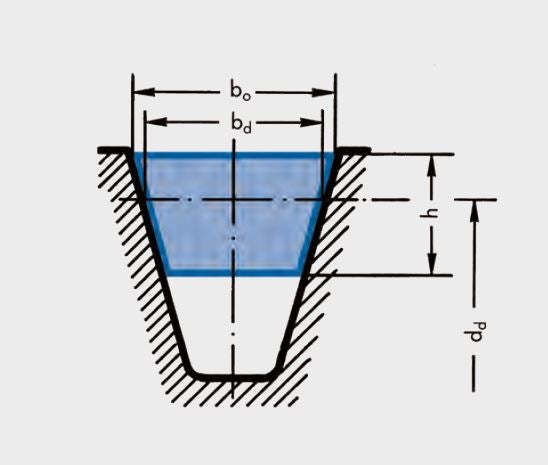
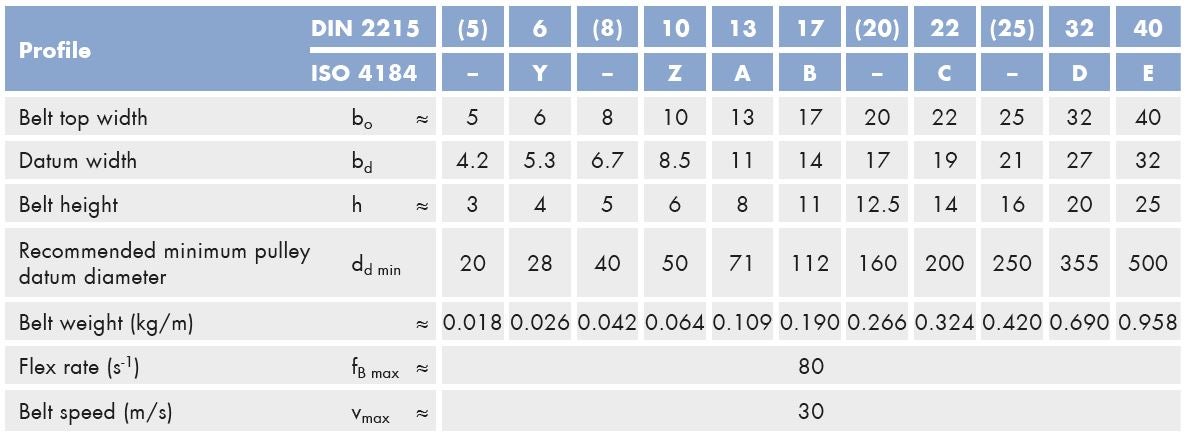
You’ll find a wide range of V-Nelts from Optibelt available from Kramp here.
Wedge Belts
Wedge belts are very similar to V-Belts, but feature a narrower, wedge shape to the profile. That narrower profile means they’re often used when space is limited, but power is important – they can transmit more power than a V-Belt of the same top width.
Optibelt’s SK wedge belt is particularly low-stretch, meaning that they can provide better performance than the DIN 2215-standard V-Belts of the same width.
You can identify the correct wedge belt by referring to the diagram and chart below. Cross-sections are identified by top width and the depth dimension.
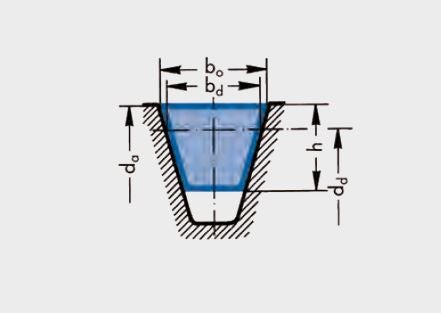
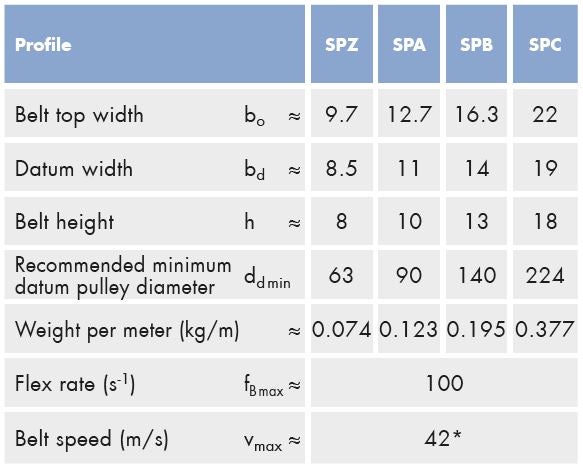
Explore the range of wedge belts available in the Kramp shop here, including Optibelt belts with profiles SPZ, SPA, SPB & SPC.
Raw Edge Cogged Belts
The Raw Edged Belt, or Cogged Belt, is a type of V-Belt. The obvious difference is that the cogged belt features cogs built into the bottom section. Unlike V-Belts, which are wrapped in fabric, the outer edge is left exposed – hence the term ‘raw edge’ - for better grip.
They’re perfectly suited for applications that demand:
- Small pulley diameters
- Greater flexibility
- High rotational speeds
- High power transmission
- Smooth running
- High and low ambient temperatures.
As such, you’ll often see them used in fans, pumps, compressors, compactors, high-performance saws and special machines.
When deciding the right Optibelt raw edge cogged belt, refer to the Super X Power and the Super TX Power guide tables below.
Super X Power
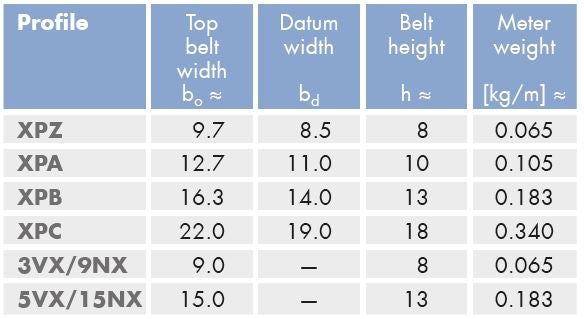
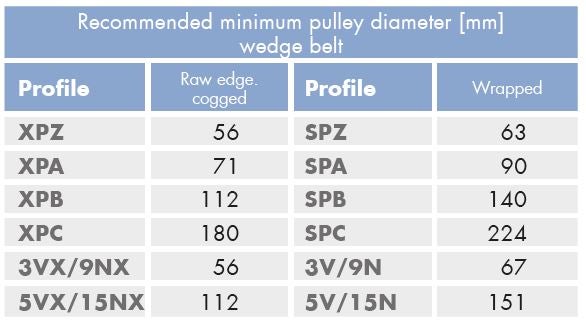
Super TX Power


Explore the ranges for the Super X Power here and the Super TX Power here.
How to Identify The Right Belt Drive and Find It on the Kramp Web Shop
If your existing belt is still showing the brand, profile, size and lengths (datum or pitch length (Ld or Lw) in mm; inside circumference length (Li) in mm), locating the right replacement drive belt is easy. Use the profile type and designated length (eg, B240, A45 or C58) to narrow down your search in the web shop.
Remember, if you’re still unsure at any point and would like expert advice on choosing the right drive belt for your machine, contact your Kramp representative, find a Kramp dealer near you or contact us at knowledgecenter@kramp.com. We’re always happy to make your life easier.
